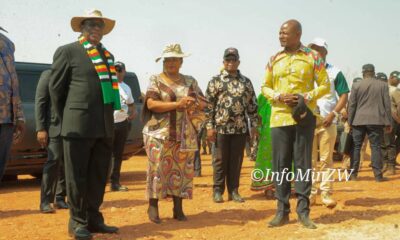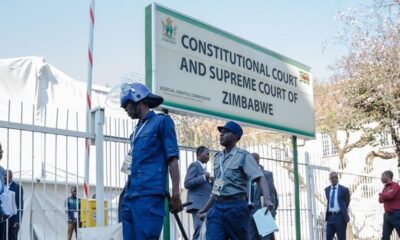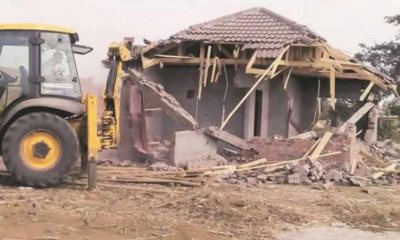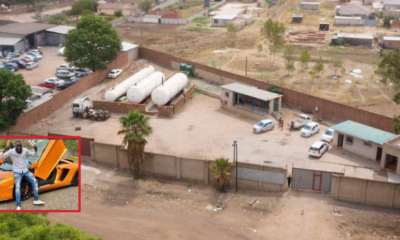MATTHEW MARE
THE insufficiencies of the Lancaster House constitution resulted in tenacious calls by feminists and gender activists to substitute it with a more democratic supreme law that endeavours to protect and advance the rights of women (Magaisa, 2011).
In 2008, the Government of National Unity that was ushered in Zimbabwe as a result of a hung parliament, amongst other things, was mandated to come up with a “people-driven” constitution.
This became a glorious opportunity that gender activists and feminists had been waiting for in order for them to contribute towards a new gender-cognisant constitution. Notably, Women of Zimbabwe Arise, Zimbabwe Women Lawyers Association, the Women’s Action Group, and several other women’s organisations seized the opportunity to mobilise gender activists and feminists from all walks of life and submitted papers calling for gender equality during outreach meetings.
They specifically called for inclusion of clauses that encompassed pertinent issues that have been presented on the section that dealt the with Convention on the Elimination of All Forms of Discrimination Against Women (Cedaw).
By promulgating a new constitution on 22 August 2013, Zimbabwe integrated the human rights-based approach and liberal feminism, which emphasise the legal, policy and institutional reforms to strengthen equality between women and men in society.
In addition, best international and national human rights standards were implemented in order to ensure that gender equality and non-discrimination were guaranteed.
Besides Cedaw, other protocols that were included in the constitution include the Protocol to the African Charter on Human and People’s Rights on the Rights of Women in Africa (Maputo Protocol), and the Southern African Development Community Protocol on Gender and Development (Sadc Gender Protocol).
The Constitution of Zimbabwe also includes an extended Declaration of Rights under Section 80 (1), which guarantees to women, socio-economic and political rights. Similarly, Section 51 reinforces the respect for the inherent dignity and the acceptance of women as part of human diversity and humanity.
Section 27 (2) mandates the government to take appropriate measures to ensure that girls are given similar opportunities as boys in order to facilitate them to obtain education at all levels.
Relatedly, Section 14 and 27 resonate with article 4 (3) of the Sadc Gender Protocol, which emphasises on the need for states to put in place favourable measures that eliminate the barriers for the expressive participation of women in all spheres of life.
These spheres include empowerment and affirmative action measures whose objectives are to break inequalities that hinder the progression of women such as limited access to productive resources and education, abuse and exploitation as well as the right to live a decent life.
This is expressly espoused under 17 (c-d), which directs the State to “take practical measures to ensure that women have access to resources including land on the basis of equality with men”, and to “take positive measures to rectify gender discrimination and imbalances resulting from past practices and policies”.
This is also in sync with the Maputo Protocol, particularly article 19 (c), which encourages states to ensure women have access to and control over productive resources including land.
The constitution under Section 14 (2) domesticates article 7 (6) (a) of the Sadc Gender Protocol which mandates state parties to create opportunities for women’s employment.
Thus, the inclusion of section 14 in the constitution affords women to escape the various human rights violation traps that come with unemployment. In addition, section 65 (6-7) provides for fair and reasonable labour practices on all human beings.
Like article 4 and 7 11(a) of the Sadc Gender Protocol and some parts of article 11 of the Cedaw, Section 65 (6-7) guarantees the right to the same pay for women and fully paid maternity leave for a period of at least three months.
Section 17 (1) of the constitution mandates the state to fully promote gender balance. And section 17(b) orders the state to ensure equal representation between women and men in all institutions and arms of government.
To add on, Section 17 (d) (ii) lobbies for women to “…constitute at least half the membership of all commissions and other elective and appointed governmental bodies established by or under this constitution or any act of parliament”.
This resonates with article 5 of Sadc Gender Protocol, Article 8 (e) of the Maputo Protocol and article 11 of Cedaw which both encourage gender balance as a step towards sustainable development and justice.
The constitution also speaks of non-discrimination of women under section 56. Section 56 (3) contains issues to do with sex, marital status, gender and pregnancy as grounds of prohibited discrimination.
Relatedly, marriage rights and abolition of harmful practices are constituted under Section 78 of the constitution (2013, 38), which sets 18 years as the minimum marriageable age for children.
Further, Section 78 (2) criminalises forced marriages, which are prevalent in apostolic sects. These provisions domesticate article 4 (8 a, b) of the Sadc Gender Protocol, and article 6 (a-b) of the Maputo Protocol and Cedaw which accentuate on the need for consent in marriage. They also set 18 years as the age for one to be married.
The declaration of 18 years as the age of marriage and the emphasis given for consent in the Constitution, effectively ban child marriages in Zimbabwe. This is supported by Section 80 (3), which states that all practices and traditions harmful to women are deemed to be void to the extent of the infringement of the constitution.
This is in tandem with provisions of Article 2 of the Maputo Protocol and article 2 (f) of the Cedaw that encourage the repulsion of all laws, traditions and customs that violate the rights of women.
The inclusion of the sections 78 and 80 (3) in the constitution has significantly improved litigation and the protection of the girl child from child marriages and other harmful practices.
Lastly, the constitution provides for the right to health and reproductive care services for women. Section 29 (1) delegates the state to take all practical measures to ensure the provision of basic, accessible and adequate health services throughout Zimbabwe”.
In the same way, the right to reproductive health services under section 76 (1) of the constitution borrows from article 16 (1) (e) of Cedaw, instructing states to promote and protect men and women’s right to reproductive health.
The addition of reproductive rights addresses vital women challenges, and enables them to assert their rights, reduce their vulnerability to HIV and Aids, and other sexually transmitted diseases (Gender Links, 2013).
About the writer: Matthew Mare is a Zimbabwean academic who holds two bachelor’s degrees, five master’s qualifications and a PhD. He is also doing another PhD and has 12 executive certificates in different fields.
Professionally, he is a civil servant and also board member at the National Aids Council of Zimbabwe.





















